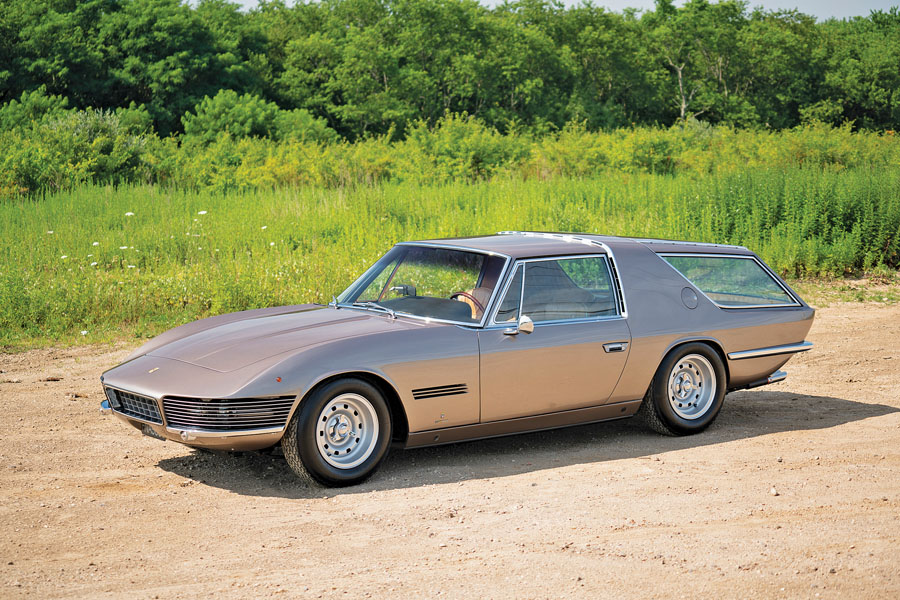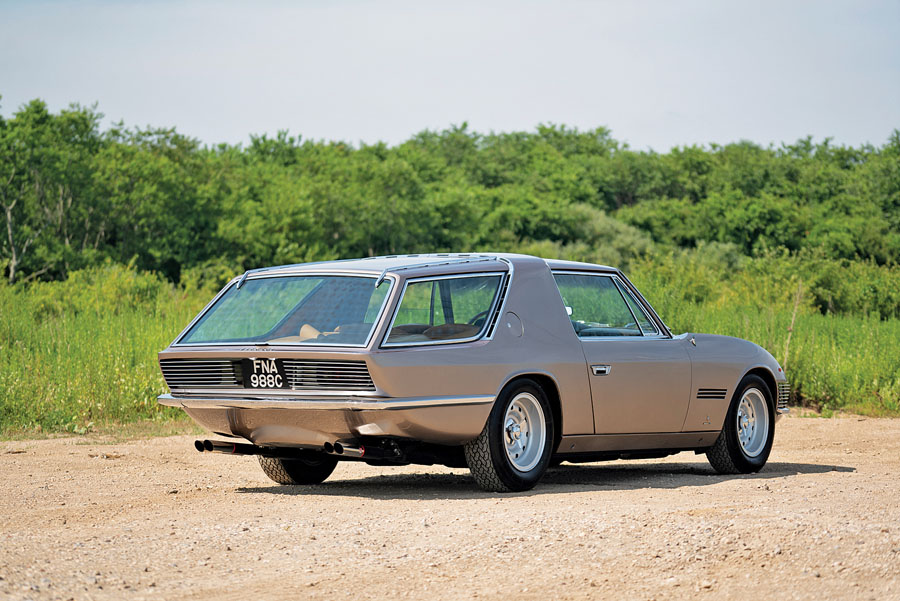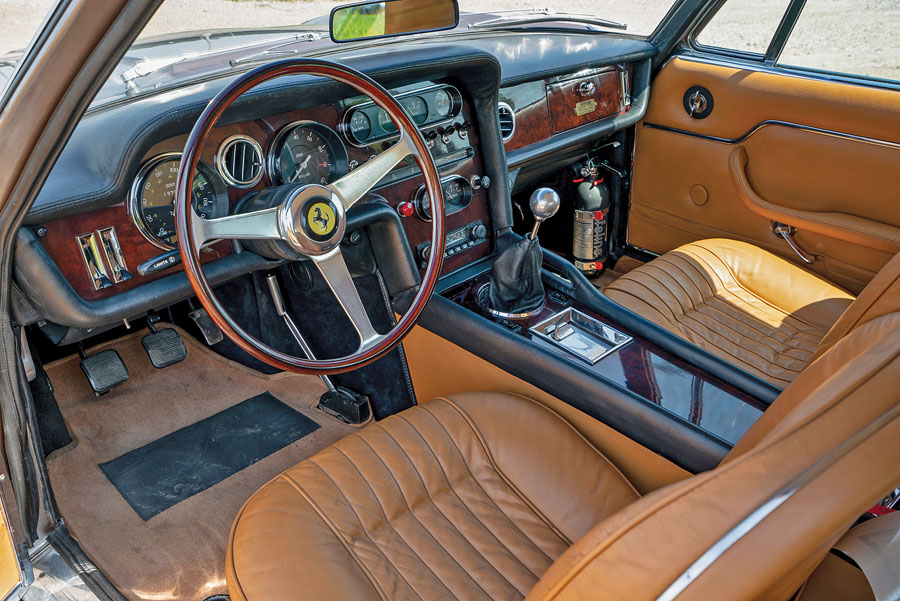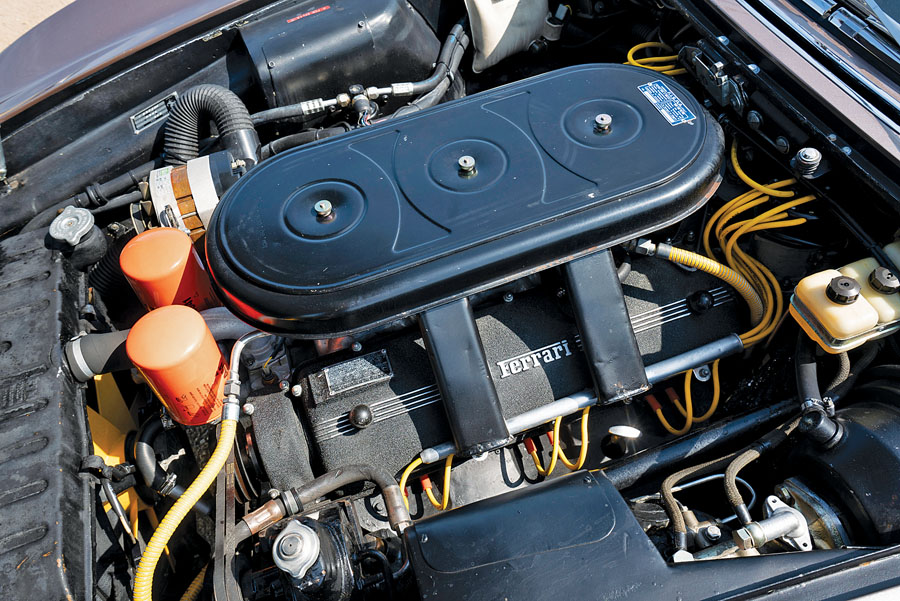SCM Analysis
Detailing
| Vehicle: | 1965 Ferrari 330 GT 2+2 Shooting Brake by Vignale |
This car, Lot 235, sold for $313,000, including buyer’s premium, at RM Sotheby’s Petersen Automotive Museum auction on December 8, 2018.
Shooting brakes are an oddity of the auto world. Originally, a brake was a horse-drawn wagon that was used to train horses for pulling duty. The same type of wagon was sometimes used to transport wealthy hunters and their shotguns to a bird hunt, so they came to be called shooting brakes.
As horse-drawn shooting brakes gave way to motorized versions, aristocratic landowners commissioned vehicles with an area specially constructed to carry hunters and their gear. In a game of one-upmanship, the creations often became more opulent than functional.
What makes a car a shooting brake?
Defining a shooting brake is more subjective than science.
It’s a given that a shooting brake will have two doors and a station wagon-like rear area with side windows. That covers a lot of cars that aren’t shooting brakes — such as a Chevy Nomad.
A shooting brake has a dose of drama. You see one and think, “I can’t believe they made a station wagon out of that car.” The defining factor is exclusivity. They are one-offs or part of very small production runs.
In Ferrari World, there are only a few shooting brakes. Two examples, our subject 330-based Vignale shooting brake and a 365 GTB/4 Daytona shooting brake, are one-offs.
The Sultan of Brunei commissioned Pininfarina to build a 456GT-based shooting brake. His car was dubbed a “Venice.” The car was very attractive, so the sultan ordered a few additional examples.
Start with a beater
Here’s a little tip on customized, converted, and rebodied cars: Few people start a project with a great car. Projects usually start with a wrecked or run-down example, and that’s what happened with our subject car, which started life as a regular 330 GT 2+2.
Early in its existence, the car was involved in some kind of trauma that necessitated major body repair and a new engine. Enter Bob Peak. Peak was an illustrator of the first order. He’s known as the father of the modern movie poster after producing the poster for “West Side Story” and then a succession of posters for top-budget movies. He’s also known for illustrating the Marlboro Man.
Peak lived near Luigi Chinetti’s Ferrari dealership and was a Ferrari enthusiast. He became friends with Luigi Chinetti Jr., and they formed Chinetti/Peak Design. The company was formed to design restaurants, but passion intervened, and custom cars crept into their portfolio.
Turning chassis 07963 into a shooting brake was one of their designs.
The wrecked car and some sketches were shipped to famed Italian coachbuilder Alfredo Vignale, where the sketches were turned into coachwork. Vignale was known for bold and detailed work, and the project fit his talents well.
Upon completion, the Ferrari was shown at the Turin Auto Show, where it surely brought admiration for its styling — and just as surely sparked confusion about why someone would make a station wagon out of a Ferrari. The car turned out to be Vignale’s last work, as he was killed in a car crash not long after the shooting brake was completed.
This car gets around
I first encountered chassis 07963 in 1980 or so. It was in a dark corner of a shop in Virginia. It immediately fascinated me with its juxtaposition of exotic styling, Ferrari performance and station-wagon utility.
Many years later, I came across the car again in a Houston shop. The car had migrated to Texas oilman John Mecom’s collection of one-offs. Mecom also owned the Daytona Shooting Brake at the same time. The car later made its way to France, where it again was stabled with the Daytona shooting brake.
Oddly, it’s an icon
Like it or not, chassis 07963 is an iconic Ferrari. It is one of the few cars on the planet that is readily identified by its name alone.
It has been shown at the Torino Auto Show, the Cartier Style et Luxe Concours, the Luis Vuitton Concours d’Elégance at Bagatelle, the Villa d’Este Concours d’Elégance, and The Quail. A picture of the car can be found in many serious Ferrari books.
It has been a feature car in Octane magazine and a feature and cover car in Maranello World magazine. It has had celebrity ownership including a couple of Forbes List men and a famous musician.
If all this history is not enough to earn respect, I can’t imagine what would.
Famous — but not extremely valuable
Unfortunately, when it comes to value, our subject car gets no respect.
RM Sotheby’s sale of chassis 07963 in Los Angeles follows an unsuccessful offering of the car at Bonhams’ Quail Lodge sale in 2008 and at Bonhams’ Dubai sale in 2010. Gooding & Company tried their luck with the car at Pebble Beach in 2017 — with no takers.
RM Sotheby’s finally got the job done at the Petersen Museum — but at a bitterly disappointing number.
Valuing the car is not easy. There aren’t many comps, and the market for such a car is quite thin. Gooding & Company estimated it at $700,000 to $900,000 at Pebble Beach in 2017, and they didn’t get close. RM Sotheby’s backed down their estimate to $550,000 to $750,000, but the former owner ultimately had to settle for an anemic $313,000.
While the styling is controversial, this car will get invited to shows that a similarly priced 330 2+2 couldn’t dream of entering.
The seller had to leave the auction wondering why this car didn’t sell for more. The buyer left the auction basking in good fortune.
Ferrari collectors in the room during the RM Sotheby’s Petersen Automotive Museum sale will see the car at future shows — and then question why they didn’t hold up their hands. This was a great purchase for the buyer. ♦
(Introductory description courtesy of RM Sotheby’s.)



